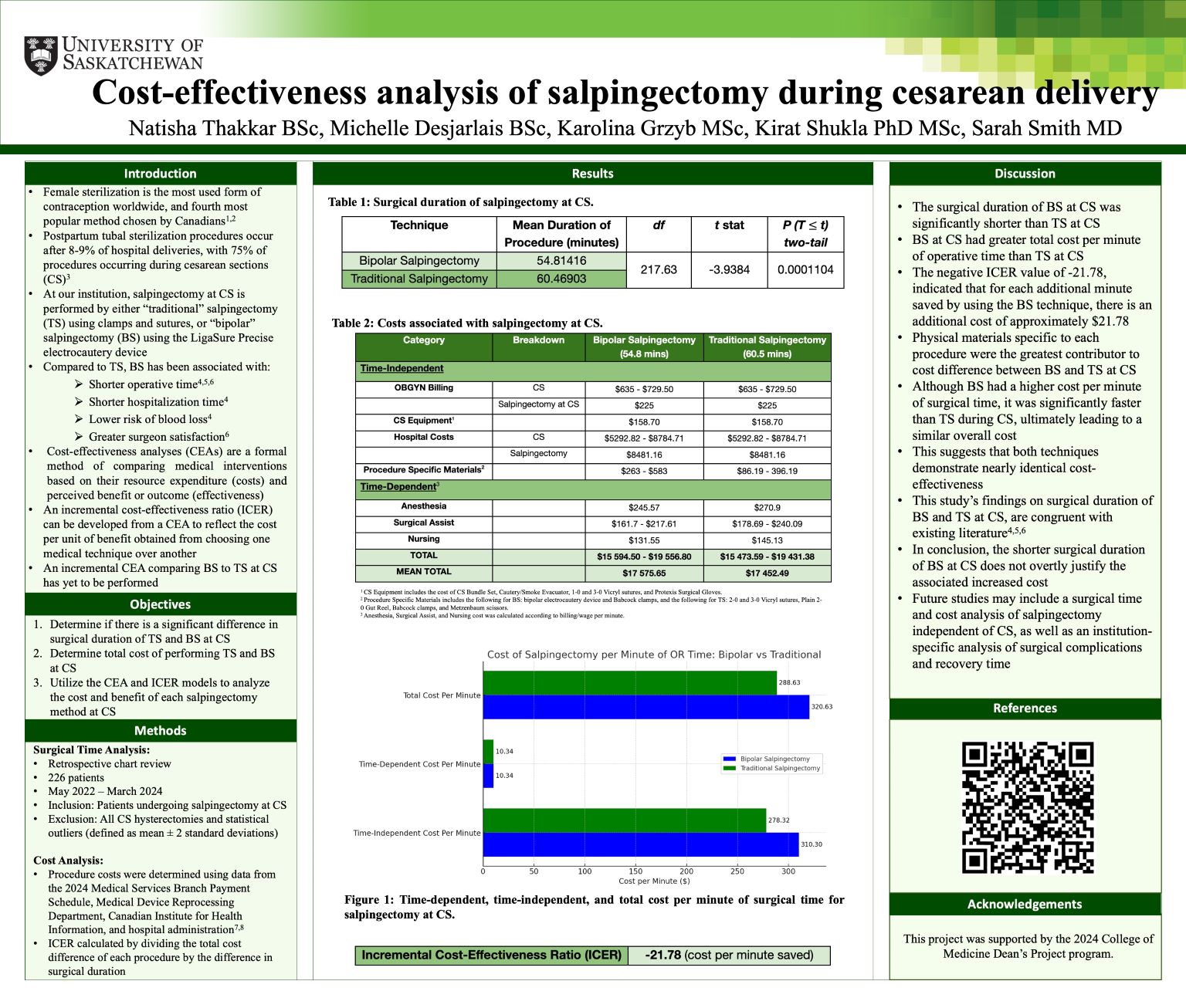
Cost-effectiveness analysis of salpingectomy during cesarean delivery
Natisha Thakkar
Background: Female sterilization is often performed opportunistically at cesarean section (CS). At our institution, salpingectomy at CS is performed by “traditional” salpingectomy (TS) using clamps and sutures, or “bipolar” salpingectomy (BS) using the advanced electrocautery device. BS at CS offers a shorter operative time than TS, but may have increased cost. Cost-effectiveness analyses and incremental cost-effectiveness ratios (ICERs) compare interventions based on their resource expenditure and perceived benefit. This study aims to compare the surgical duration and cost of TS and BS at CS.
Methods: A retrospective chart review was conducted on 226 patients who underwent salpingectomy at CS between May 2022-March 2024. The associated costs of BS and TS at CS were tabulated. The ICER was calculated by dividing the total cost difference of each procedure by the difference in surgical duration.
Results: BS at CS had a 5.65-minute shorter operative time compared to TS. While BS had a higher cost per minute of operative time, the total costs were similar. The ICER indicated an additional cost of $21.78 for every minute saved with BS.
Conclusion: BS and TS at CS were comparably cost-effective, with the shorter surgical duration of BS not justifying the increased cost.
